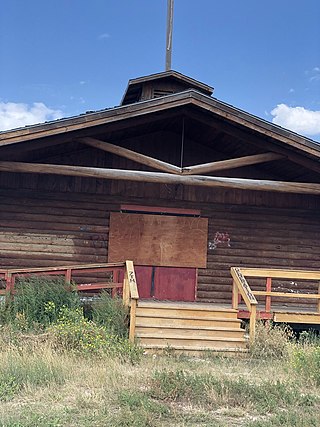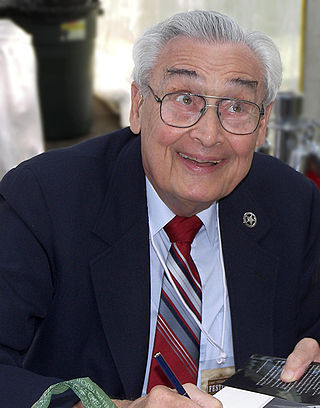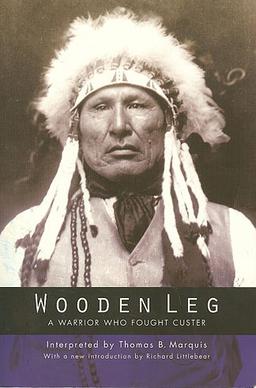
The Battle of the Little Bighorn, known to the Lakota and other Plains Indians as the Battle of the Greasy Grass, and commonly referred to as Custer's Last Stand, was an armed engagement between combined forces of the Lakota Sioux, Northern Cheyenne, and Arapaho tribes and the 7th Cavalry Regiment of the United States Army. It took place on June 25–26, 1876, along the Little Bighorn River in the Crow Indian Reservation in southeastern Montana Territory. The battle, which resulted in the defeat of U.S. forces, was the most significant action of the Great Sioux War of 1876.

Sitting Bull was a Hunkpapa Lakota leader who led his people during years of resistance against United States government policies. Sitting Bull was killed by Indian agency police on the Standing Rock Indian Reservation during an attempt to arrest him at a time when authorities feared that he would join the Ghost Dance movement.

The Ghost Dance is a ceremony incorporated into numerous Native American belief systems. According to the millenarian teachings of the Northern Paiute spiritual leader Wovoka, proper practice of the dance would reunite the living with spirits of the dead, bring the spirits to fight on their behalf, end American Westward expansion, and bring peace, prosperity, and unity to Native American peoples throughout the region.

The Wounded Knee Massacre, also known as the Battle of Wounded Knee, was the massacre of nearly three hundred Lakota people by soldiers of the United States Army. The massacre, part of what the U.S. military called the Pine Ridge Campaign, occurred on December 29, 1890, near Wounded Knee Creek on the Lakota Pine Ridge Indian Reservation in South Dakota, following a botched attempt to disarm the Lakota camp. The previous day, a detachment of the U.S. 7th Cavalry Regiment commanded by Major Samuel M. Whitside approached Spotted Elk's band of Miniconjou Lakota and 38 Hunkpapa Lakota near Porcupine Butte and escorted them five miles westward to Wounded Knee Creek, where they made camp. The remainder of the 7th Cavalry Regiment, led by Colonel James W. Forsyth, arrived and surrounded the encampment. The regiment was supported by a battery of four Hotchkiss mountain guns. The Army was catering to the anxiety of settlers who called the conflict the Messiah War and were worried the Ghost Dance signified a potentially dangerous Sioux resurgence. Historian Jeffrey Ostler wrote in 2004, "Wounded Knee was not made up of a series of discrete unconnected events. Instead, from the disarming to the burial of the dead, it consisted of a series of acts held together by an underlying logic of racist domination."

The Battle of the Rosebud took place on June 17, 1876, in the Montana Territory between the United States Army and its Crow and Shoshoni allies against a force consisting mostly of Lakota Sioux and Northern Cheyenne Indians during the Great Sioux War of 1876. The Cheyenne called it the Battle Where the Girl Saved Her Brother because of an incident during the fight involving Buffalo Calf Road Woman. General George Crook's offensive was stymied by the Indians, led by Crazy Horse, and he awaited reinforcements before resuming the campaign in August.

The Sioux Wars were a series of conflicts between the United States and various subgroups of the Sioux people which occurred in the later half of the 19th century. The earliest conflict came in 1854 when a fight broke out at Fort Laramie in Wyoming, when Sioux warriors killed 31 American soldiers in the Grattan Massacre, and the final came in 1890 during the Ghost Dance War.

The Ghost Dance War was the military reaction of the United States government against the spread of the Ghost Dance movement on Lakota Sioux reservations in 1890 and 1891. The U.S. Army designation for this conflict was Pine Ridge Campaign. White settlers called it the Messiah War. Lakota Sioux reservations were occupied by the U.S. Army, causing fear, confusion, and resistance among the Lakota. It resulted in the Wounded Knee Massacre wherein the 7th Cavalry killed over 250 Lakota, primarily unarmed women, children, and elders, at Wounded Knee on December 29, 1890. The end of the Ghost Dance War is usually dated January 15, 1891, when Lakota Ghost-Dancing leader Kicking Bear decided to meet with US officials. However, the U.S. government continued to use the threat of violence to suppress the Ghost Dance at Lakota reservations Pine Ridge, Rosebud, Cheyenne River, and Standing Rock.

Bloody Knife was an American Indian who served as a scout and guide for the U.S. 7th Cavalry Regiment. He was the favorite scout of Lieutenant Colonel George Armstrong Custer and has been called "perhaps the most famous Native American scout to serve the U.S. Army."

American Horse was an Oglala Lakota chief, statesman, educator and historian. American Horse is notable in American history as a U.S. Army Indian Scout and a progressive Oglala Lakota leader who promoted friendly associations with whites and education for his people. American Horse opposed Crazy Horse during the Great Sioux War of 1876–1877 and the Ghost Dance Movement of 1890, and was a Lakota delegate to Washington. American Horse was one of the first Wild Westers with Buffalo Bill's Wild West and a supporter of the Carlisle Indian Industrial School. His record as a councilor of his people and his policy in the new situation that confronted them was consistent, and he was known for his eloquence.

Frank Fools Crow was an Oglala Lakota civic and religious leader. 'Grandfather', or 'Grandpa Frank' as he was often called, was a nephew of Black Elk who worked to preserve Lakota traditions, including the Sun Dance and yuwipi ceremonies. He supported Lakota sovereignty and treaty rights, and was a leader of the traditional faction during the armed standoff at Wounded Knee in 1973. With writer Thomas E. Mails, he produced two books about his life and work, Fools Crow in 1979, and Fools Crow: Wisdom and Power in 1990.

The Wounded Knee Occupation, also known as Second Wounded Knee, began on February 27, 1973, when approximately 200 Oglala Lakota and followers of the American Indian Movement (AIM) seized and occupied the town of Wounded Knee, South Dakota, United States, on the Pine Ridge Indian Reservation. The protest followed the failure of an effort of the Oglala Sioux Civil Rights Organization (OSCRO) to use impeachment to remove tribal president Richard Wilson, whom they accused of corruption and abuse of opponents. Protesters also criticized the United States government's failure to fulfill treaties with Native American people, and demanded the reopening of treaty negotiations with the goal of fair and equitable treatment of Native Americans.
Isaiah Dorman was an interpreter for the United States Army during the Indian Wars. He perished at the Battle of Little Bighorn, the only black man killed in the fight.

Lone Horn, also called One Horn, born in present-day South Dakota, was chief of the Wakpokinyan band of the Minneconjou Lakota.

James McLaughlin was a Canadian-American United States Indian agent and inspector, best known for having ordered the arrest of Sitting Bull in December 1890, which resulted in the chief's death and contributed to the Wounded Knee Massacre. Before this event, he was known for his positive relations with several tribes. His memoir, published in 1910, was entitled, My Friend the Indian.

Robert Marshall Utley was an American author and historian who wrote sixteen books on the history of the American West. He was a chief historian for the National Park Service.

Wooden Leg: A Warrior Who Fought Custer is a 1931 book by Thomas Bailey Marquis about the life of a Northern Cheyenne Indian, Wooden Leg, who fought in several historic battles between United States forces and the Plains Indians, including the Battle of the Little Bighorn, where he faced the troops of George Armstrong Custer. The book is of great value to historians, not only for its eyewitness accounts of battles, but also for its detailed description of the way of life of 19th-century Plains Indians.
The Battle of Honsinger Bluff was a conflict between the United States Army and the Sioux people on August 4, 1873 along the Yellowstone River near present-day Miles City, Montana. This was a U.S. territory that was acquired from the Crow Nation in the year 1868. The main combatants were units of the U.S. 7th Cavalry under Lt. Col. George Armstrong Custer, and Native Americans from the village of the Hunkpapa medicine man, Sitting Bull, many of whom would clash with Custer again approximately three years later at the Battle of the Little Big Horn in the Crow Indian Reservation.

Spotted Elk, was a chief of the Miniconjou, Lakota Sioux. He was a son of Miniconjou chief Lone Horn and became a chief upon his father's death. He was a highly renowned chief with skills in war and negotiations. A United States Army soldier, at Fort Bennett, coined the nickname Big Foot – not to be confused with Oglala Big Foot.

One Bull, sometimes given as Lone Bull, later known as Henry Oscar One Bull, was a Lakota Sioux man best known for being the nephew and adopted son of Sitting Bull. He fought at Battle of the Little Bighorn and, in his later years, provided interviews about his life as a warrior.

The Great Sioux Nation: Sitting in Judgment on America is a book edited by Roxanne Dunbar-Ortiz, "An Oral History of the Sioux Nation and Its Struggle for Sovereignty", that documents the 1974 "Lincoln Treaty Hearing". Testimony produced during that hearing has been cited by the International Indian Treaty Council in advocating for Indigenous sovereignty and treaty rights, efforts which eventually saw the 2007 Declaration on the Rights of Indigenous Peoples.


















